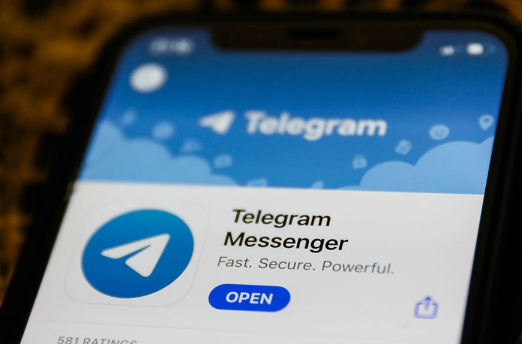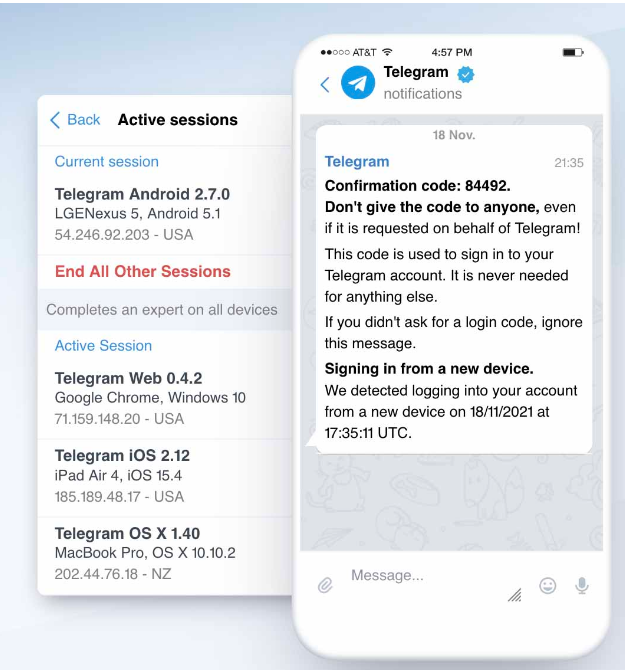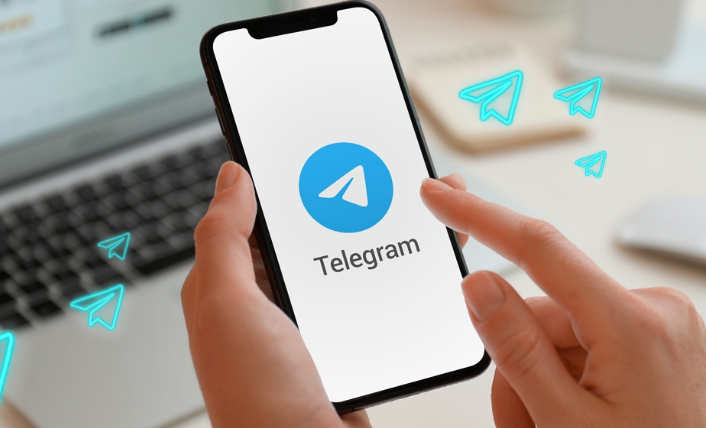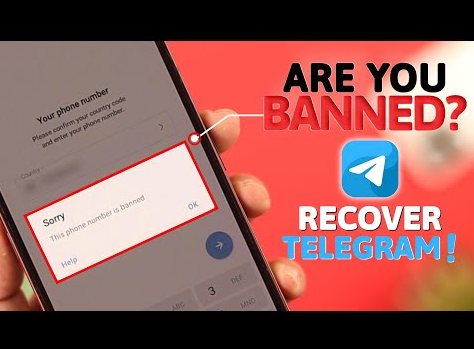The Telegram recovery code is a unique, user-generated code that helps you regain access to your account if you lose your primary authentication method.
What is Telegram Recovery Code?
Definition
A Telegram Recovery Code serves as a critical security feature for Telegram users, enabling them to regain access to their accounts in the event they cannot use their mobile device or the primary method of authentication fails. Unlike standard password recovery methods, a recovery code bypasses the need for access to the registered phone number or email, offering an alternative route for account restoration.
Purpose and Functionality
The primary purpose of the Telegram Recovery Code is to provide users with a secure method to recover their accounts without relying on traditional recovery options like SMS or email verification, which can be vulnerable to hacking or inaccessible if the user loses access to their phone or email account.
Functionality wise, the recovery code is a unique, user-generated code that must be entered to regain access to an account. Users are advised to create a recovery code as soon as they set up their Telegram account and store it in a safe place. In cases where a user’s phone is lost, stolen, or if they are unable to access their primary authentication method, the recovery code can be used to promptly and securely restore account access.
If a user’s phone is unavailable, they can enter their recovery code on a new device to immediately regain access to their Telegram account, bypassing the need for SMS verification. This direct approach contrasts with email recovery options, where users might wait minutes or even hours to receive a recovery link.
Security measures surrounding the recovery code are robust. Telegram encrypts the code and does not store it on their servers, ensuring that only the user has access to it. This practice significantly reduces the risk of unauthorized account access, making it a preferred recovery option for users prioritizing security.
In terms of effectiveness, recovery codes offer a fail-safe mechanism that complements Telegram’s encryption and privacy policies. Telegram’s end-to-end encryption ensures messages are only readable by the intended recipient, and the recovery code adds an additional layer of security by safeguarding account access.

How to Set Up Recovery Code
Step-by-Step Guide
- Open Telegram: Start by launching the Telegram app on your device.
- Access Settings: Navigate to the ‘Settings’ menu, typically found by tapping the three lines or dots in the app’s corner.
- Privacy and Security: Select the ‘Privacy and Security’ option to access security settings.
- Set Up Recovery Code: Look for an option labeled ‘Two-Step Verification’ or similar. Within this menu, you’ll find the option to set up a recovery code.
- Create Your Recovery Code: Follow the prompts to create your recovery code. Telegram will ask you to enter the code twice to ensure accuracy.
- Confirmation: Once you’ve entered your recovery code, Telegram will confirm that your recovery code is set up.
Important: Store your recovery code in a secure location. Whether you choose a physical safe or a trusted digital password manager, ensure that your code is accessible only to you and completely secure.

Tips for Creating a Strong Recovery Code
- Use a Mix of Characters: A strong recovery code should include a mix of letters (both uppercase and lowercase), numbers, and symbols. This diversity makes your code harder to guess or crack.
- Avoid Personal Information: Do not use easily guessable information like your birthday, phone number, or common words. Random combinations are significantly more secure.
- Length Matters: Aim for a code that is at least 12 characters long. Longer codes are more difficult for attackers to decipher due to the increased number of possible combinations.
- Use a Password Generator: If you’re unsure how to create a strong code, consider using a password generator. These tools create complex codes that are difficult to hack.
- Regular Updates: While not always necessary, periodically changing your recovery code can enhance security, especially if you suspect that your code might have been seen or copied.
By following these steps and tips, you can ensure that your Telegram account has an added layer of security, making it more difficult for unauthorized users to gain access. A well-chosen recovery code acts as a robust last line of defense for your digital privacy and security on Telegram.
Using Recovery Code
How to Use Recovery Code for Account Recovery
If you find yourself locked out of your Telegram account, the recovery code is your key to regaining access. Here’s how to use it:
- Open Telegram: Start the app or website to access the login screen.
- Choose ‘Log In’: Click on ‘Log In’ and enter your phone number.
- Select ‘Forgot Password’: If prompted for a password and you can’t remember it, look for the ‘Forgot Password’ or a similar option.
- Enter Your Recovery Code: You’ll be asked to enter your recovery code. Input the code you created during the setup process.
- Account Recovery: Upon successful verification of your recovery code, you’ll gain immediate access to your account.
Important: Always ensure your recovery code is accurate. Even small mistakes can prevent you from accessing your account.
What to Do if Recovery Code Doesn’t Work
In the rare event that your recovery code doesn’t work, follow these steps:
- Double-Check Your Code: Make sure you’ve entered the code correctly. Check for any potential errors or misinterpretations of characters.
- Try Multiple Times: If you’re confident in the accuracy of your code, attempt to enter it a few times. Occasional errors can occur due to system glitches.
- Contact Telegram Support: If repeated attempts fail, reach out to Telegram support. Provide them with as much information as possible to prove your ownership of the account.
- Preventive Measures: For future security, once you regain access, consider updating your recovery code and reviewing your account’s security settings.
Important: Maintain an updated and accessible record of your recovery code. This practice ensures you can always regain access to your Telegram account, even under stressful circumstances.

Security and Privacy
How Telegram Protects Your Recovery Code
Telegram employs multiple layers of security to protect your recovery code and ensure that your account remains accessible only to you. Encryption is at the forefront of these measures. The recovery code is encrypted, meaning that without the correct decryption key, which only you possess, the code is unreadable to others.
Telegram does not store your recovery code on its servers. This means that the risk of your recovery code being exposed through a server breach is virtually nonexistent. The responsibility of storing the recovery code safely lies with you, the user, which significantly reduces the likelihood of unauthorized access.
Regular security audits also play a crucial role in protecting your recovery code. Telegram periodically reviews its security protocols to guard against new vulnerabilities, ensuring that the protection of your recovery code remains robust against evolving threats.
Best Practices for Keeping Your Recovery Code Safe
- Use a Secure Storage Solution: Store your recovery code in a password manager or another secure location. These tools are designed to keep sensitive information safe and are encrypted, making them a robust option for storing your recovery code.
- Avoid Digital Copies in Insecure Locations: Do not store your recovery code in plain text files, emails, or notes on your device that are not encrypted. If your device is compromised, these locations can be easily accessed by unauthorized individuals.
- Physical Copies Should Be Kept Safe: If you prefer having a physical copy of your recovery code, ensure it’s stored in a secure location, such as a safe. Minimize the risk of loss or damage by avoiding common areas and keeping it away from potential threats like water or fire.
- Limit Sharing: Do not share your recovery code with anyone. The only person who should have access to this code is you. Sharing your code increases the risk of unauthorized account access.
- Regular Updates: If you suspect that your recovery code has been seen or compromised, change it. This can be done through Telegram’s security settings, ensuring that any potential breach is effectively mitigated.
By following these best practices, you can significantly enhance the security and privacy of your Telegram recovery code, ensuring that your account remains protected against unauthorized access. Always prioritize the safety of your recovery code to maintain the integrity of your Telegram account.

Troubleshooting
Common Issues and Solutions
- Issue: Unable to Receive Verification Code
- Solution: Check your internet connection and ensure your phone number is entered correctly. If you’re using SMS, wait a few minutes as network delays can occur. For persistent issues, consider using a voice call option for verification.
- Issue: Recovery Code Not Working
- Solution: Double-check the recovery code for any typing errors. Ensure you’re entering the code exactly as it was created, paying close attention to case sensitivity and special characters. If the problem persists, it might be time to reset your recovery code if that option is still accessible.
- Issue: Account Access Denied Despite Correct Credentials
- Solution: Ensure your app is updated to the latest version. Older versions may have compatibility issues or bugs that prevent successful login. Additionally, clear the cache of your Telegram app or try accessing your account from a different device.
- Issue: Forgotten Recovery Code
- Solution: If you’ve lost access to your recovery code and can’t access your account, the only solution is to contact Telegram support for assistance. Prepare to provide any information they might need to verify your identity and ownership of the account.

How to Contact Support for Help
For issues beyond basic troubleshooting, contacting Telegram support is straightforward:
- Via the App: Navigate to ‘Settings’, then ‘Help’, and select ‘Ask a Question’. This method connects you to a support bot, and potentially, to a live support agent.
- Through the Website: Visit the Telegram support page and use the contact form to describe your issue. Be as detailed as possible, providing all relevant information, including your phone number and the nature of the problem.
- Email: For specific issues, especially those concerning account security, sending a detailed email to Telegram’s support address can be effective. Include all necessary details to facilitate a quick resolution.
Important: Always ensure that you’re contacting Telegram through official channels. Be wary of third-party websites or email addresses claiming to offer Telegram support, as these can be phishing attempts designed to compromise your account.
By following these steps and recommendations, you can resolve most issues related to Telegram usage and account access. In cases where self-help solutions do not suffice, reaching out to Telegram support can provide the necessary assistance to regain access to your account or resolve other pressing concerns.